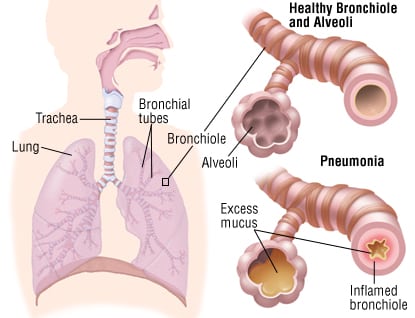A distinguishing feature of lower airway and pulmonary vessel disorders is the presence of  dyspnea. Dyspnea (shortness of breath) is a subjective experience that results when air flow, oxygen exchange, or both are impaired. The sensation of uncomfortable breathing can be as distressing as pain and can lead to severe functional disability. The intensity and frequency of dyspnea as well as its association with specific activities must be assessed to develop realistic expectations of treatment outcomes. Because the experience of dyspnea is associated with much anxiety, nursing interventions to relieve this manifestations are essential to the care of clients with conditions of the lower airways and pulmonary vessels.
dyspnea. Dyspnea (shortness of breath) is a subjective experience that results when air flow, oxygen exchange, or both are impaired. The sensation of uncomfortable breathing can be as distressing as pain and can lead to severe functional disability. The intensity and frequency of dyspnea as well as its association with specific activities must be assessed to develop realistic expectations of treatment outcomes. Because the experience of dyspnea is associated with much anxiety, nursing interventions to relieve this manifestations are essential to the care of clients with conditions of the lower airways and pulmonary vessels.
Pneumonia (pneumonitis) is an inflammatory process in lung parenchyma usually associated with a marked increase in interstitial and alveolar fluid. Advances in antibiotic therapy have led to the perception that pneumonia is no longer a major health problem in the United States. Among all nosocomial infections (hospital acquired), pneumonia is the second most common, but has the highest mortality. Pneumonia can be divided into three groups, which guide management: community acquired, hospital or nursing home acquired (nosocomial), and pneumonia in an immunocompromised person.
Complications of pneumonia include pleural effusion, septic shock, pericarditis, bacteremia, meningitis, delirium, atelectasis, and delayed resolution.
